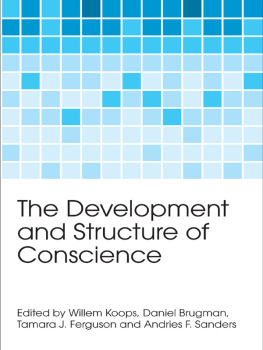THE MORAL PROJECT OF CHILDHOOD
The Moral Project of Childhood
Motherhood, Material Life, and Early Childrens Consumer Culture
Daniel Thomas Cook
NEW YORK UNIVERSITY PRESS
New York
NEW YORK UNIVERSITY PRESS
New York
www.nyupress.org
2020 by New York University
All rights reserved
References to Internet websites (URLs) were accurate at the time of writing. Neither the author nor New York University Press is responsible for URLs that may have expired or changed since the manuscript was prepared.
Library of Congress Cataloging-in-Publication Data
Names: Cook, Daniel Thomas, 1961 author.
Title: The moral project of childhood : motherhood, material life, and early childrens consumer culture / Daniel Cook.
Description: New York : NYU Press, [2020] | Includes bibliographical references and index.
Identifiers: LCCN 2019004713 | ISBN 9781479810260 (paperback) | ISBN 9781479899203 (cloth)
Subjects: LCSH: Motherhood. | Child consumers. | Consumers.
Classification: LCC HQ759 .C727 2020 | DDC 306.874/3dc23
LC record available at https://lccn.loc.gov/2019004713
New York University Press books are printed on acid-free paper, and their binding materials are chosen for strength and durability. We strive to use environmentally responsible suppliers and materials to the greatest extent possible in publishing our books.
Manufactured in the United States of America
10 9 8 7 6 5 4 3 2 1
Also available as an ebook
For Jessica: I can do nothing of worth and can be nothing of worth without you. Period.
CONTENTS
LIST OF FIGURES
The Mothers Magazine advised women to engage their children in prayer from an early age and to offer themselves as pious examples.
The proper cultivation of the sensibilities and feelings should be commenced as early as these powers begin to be developed, and never should be trifled with, or tortured.
The Christian family circle, superintended by the mother, was thought to serve as a counterweight to the influence and evil tendency of the outside world.
The Instructed Should Instruct: An older child is depicted as offering Bible instruction to two younger children, who have set aside their playthings to listen intently to the verse. This cunning act hints at a duty that devolves upon members of the family already instructed, as the author of the accompanying article notes.
Sarah Josepha Hale (17881879) merged her Ladies Magazine (18271836) with Louis Godeys Ladies Book and Magazine to become editor of Godeys Ladys Book for four decades, 18371877.
Lydia Sigourney (17911865), poet and writer, penned advice for mothers and concerned herself with the education of women, including in Godeys Ladys Book.
Young children, especially girls, were thought to be taught by the externalities of taste that could reflect, or even shape, internal character and disposition.
Taste, many insisted, could be cultivated regardless of financial circumstance, although the depiction of white, free, well-to-do children and families expressed a particular, ideal disposition.
Illustrations of girls rooms submitted for a 1903 Ladies Home Journal sponsored prize competition.
An artists rendering of an ideal girls room in 1906.
By the 1880s, space devoted exclusively for maternal concerns had become a standard feature of many womens periodicals, such as this one from Ladies Home Journal in 1890.
Womens periodicals like Ladies Home Journal and Babyhood provided regular forums to print selected letters from mothers asking for advice or sharing their views.
The Reverend Jacob Abbotts The Mother at Home: Principles of Maternal Duty and his Gentle Measures in the Management and Training of the Young, both published in the early 1870s, helped codify the position of Christian mothers as interposed between God, child, and economy.
By the 1920s, the association of mothering with commercial persuasion was ripe for satire in the inaugural issue of Parents magazine.
Introduction
Before it can imitate an articulate sound, it can understand the looks, the tones, and the actions of others, and according to the nature of these influences, will be the character of the impression produced. The first moral impression a child receives is its first lesson on religion; and this first idea is the foundation on which we are to base the superstructure of all future moral training.
The Mothers Magazine, June 1837.
Childhood confronts one inescapably as a moral problem. To contemplate childhood necessitates engagement in and with moral discourses. One cannot speak of, speak to, gaze upon, consider, or analyze any particular child, or various childhoods, without entering into and becoming entangled with morally infused vocabularies concerning the rightness and wrongness, appropriateness or inappropriateness of ones actions and, indeed, ones thoughts. Every decision made on behalf of a child favors some aspects of the world over others. No word or deed directed at a child, no object intended for a childs possession or space crafted for childrens use, no image fabricated for their eyes or sound made resonant for their ears, no amount of attention or inattention paid their activities, voices, or perspectivesin none of these can neutrality reside. Childhood, in this way, abhors and disallows moral agnosticism. It poses problems that must be handled and negotiated in some mannerbe it by institutions and structures or by people.
Children and childhood demand a ceaseless attention, a perpetual monitoring, largely due to the uncertainties they are said to imply and embody. Children, left to their own, threaten a disorder upon ongoing relations. Infants and young children do not initially speak the language of their adult hosts, walk on their own, or sanitize themselves. They often appear indifferent to the usual uses and functions of thingsthrowing objects that best remain stationary, putting indigestible things in their mouths and, at times, treating food as if it were anything but edible. In some socio-historical contexts, like that of some Protestants of seventeenth-century Europe, the professed corporeal inchoateness of the child presented a moral hazard of such profound dimension that typical social practice demanded the manual molding of the infants body (e.g., tight swaddling) and the use of devices like cradles and walking stools to urge adult physical uprightness onto the child, who then would become eligible for salvation.
Extreme and particular, perhaps, these seventeenth-century responses to a felt sense of infant formlessness nevertheless speak to a general dynamic. The regular and never-ending stream of new children into social life represents a source of perpetual uncertainty regarding the reproduction of social structures and practices. Notions of good and bad childrenand right and wrong childhoodsno doubt exist so defined in some form across swaths of social life, both cross-culturally and trans-historically. Accordingly, the impetus and necessity to identify, name, and distinguish correct from incorrect ways of exhibiting child-nessand to enforce or cajole the samerepresent a fundamental and definitional feature of childhood, more so perhaps than do age or generational considerations in and of themselves. Childhood, in this way, manifests unavoidably and primarily as a moral project.













